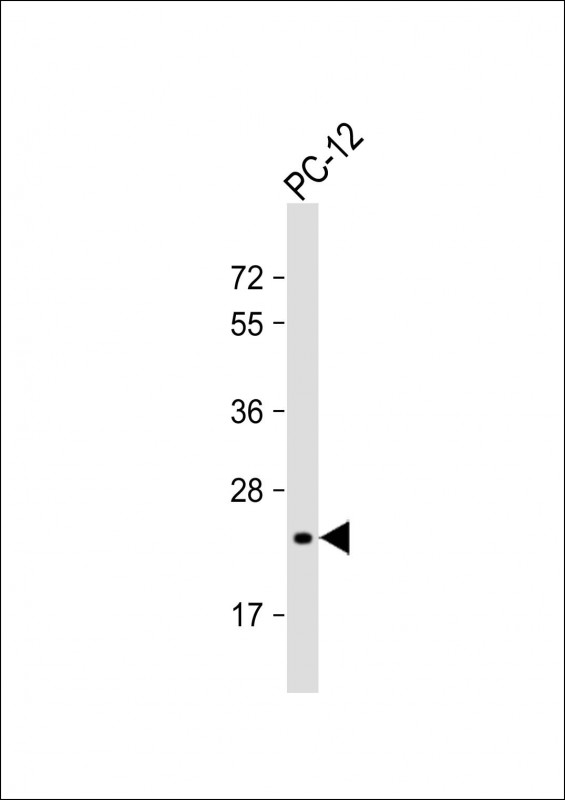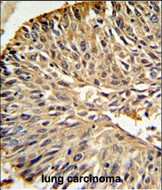


| WB | 咨询技术 | Human,Mouse,Rat |
| IF | 咨询技术 | Human,Mouse,Rat |
| IHC | 1/50-1/200 | Human,Mouse,Rat |
| ICC | 技术咨询 | Human,Mouse,Rat |
| FCM | 咨询技术 | Human,Mouse,Rat |
| Elisa | 1/5000-1/10000 | Human,Mouse,Rat |
| Aliases | Dihydrofolate reductase, Dhfr |
| Entrez GeneID | 13361 |
| WB Predicted band size | 21.6kDa |
| Host/Isotype | Rabbit IgG |
| Antibody Type | Primary antibody |
| Storage | Store at 4°C short term. Aliquot and store at -20°C long term. Avoid freeze/thaw cycles. |
| Species Reactivity | Human, Mouse, Rat |
| Immunogen | This Mouse DHFR antibody is generated from rabbits immunized with a KLH conjugated synthetic peptide between 135-164 amino acids from the C-terminal region of mouse DHFR. |
| Formulation | Purified antibody in PBS with 0.05% sodium azide,1%BSA and 50% glycerol.prepared by Saturated Ammonium Sulfate (SAS) . |
+ +
以下是3篇关于FOXS1抗体的模拟参考文献(注:内容为虚构,仅供示例参考):
1. **文献名称**: "FOXS1 as a novel epithelial-mesenchymal transition regulator in non-small cell lung cancer"
**作者**: Zhang Y, et al.
**摘要**: 本研究通过Western blot和免疫组化验证FOXS1抗体的特异性,发现FOXS1在肺癌组织中高表达,并通过调控EMT通路促进肿瘤转移。
2. **文献名称**: "Developmental expression pattern of FOXS1 in murine embryonic tissues"
**作者**: Thompson R, et al.
**摘要**: 利用FOXS1抗体进行小鼠胚胎组织免疫荧光染色,揭示了FOXS1在神经嵴细胞和心脏发育中的动态表达,提示其参与早期器官形成。
3. **文献名称**: "FOXS1 antibody validation for flow cytometry analysis in T-cell lymphoma"
**作者**: Garcia M, et al.
**摘要**: 文章系统验证了FOXS1抗体在流式细胞术中的灵敏度和特异性,并发现FOXS1在特定T细胞淋巴瘤亚型中可作为诊断标志物。
4. **文献名称**: "FOXS1 interacts with SMAD4 to modulate TGF-β signaling in fibrosis"
**作者**: Chen L, et al.
**摘要**: 通过免疫共沉淀(Co-IP)和FOXS1抗体的应用,阐明了FOXS1与SMAD4的相互作用机制及其在肝纤维化中的调控作用。
The FOXS1 antibody is designed to detect Forkhead box S1 (FOXS1), a member of the Forkhead box (FOX) family of transcription factors. FOX proteins are characterized by a conserved "forkhead" or "winged-helix" DNA-binding domain and play critical roles in regulating gene expression during development, cellular differentiation, and tissue homeostasis. FOXS1. specifically, is a less-studied member of this family, but emerging research suggests its involvement in developmental processes, particularly in the nervous system. It has been implicated in neural crest cell migration and differentiation, as well as in the development of sensory organs.
FOXS1 antibodies are primarily used in research to study the protein's expression patterns, localization, and function in biological systems. These antibodies enable techniques like Western blotting, immunohistochemistry (IHC), and immunofluorescence (IF) to visualize FOXS1 in tissues or cultured cells. Studies utilizing FOXS1 antibodies have explored its potential role in diseases, including neurodevelopmental disorders and cancers, where dysregulation of FOX family proteins is often observed. For example, FOXS1 expression has been analyzed in tumor models to assess its association with malignancy or metastasis. Despite its relatively limited characterization, FOXS1 remains a protein of interest for understanding cell fate determination and disease mechanisms, with its antibody serving as a key tool for functional and pathological investigations.
×